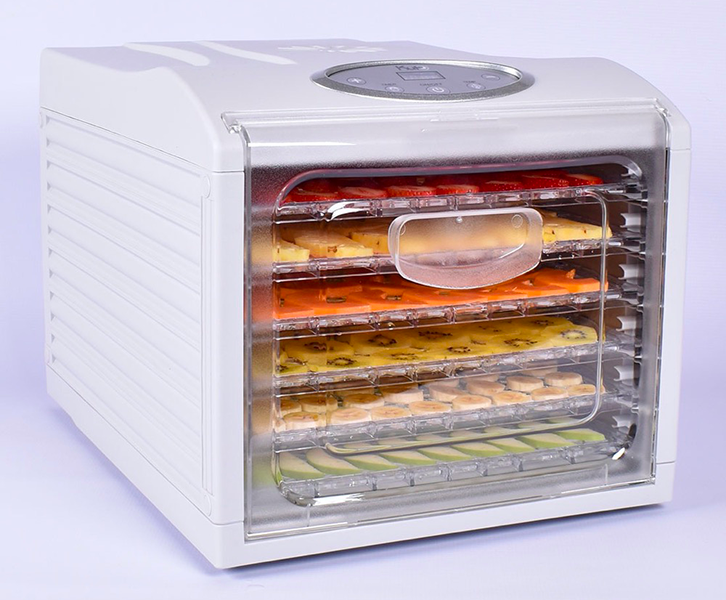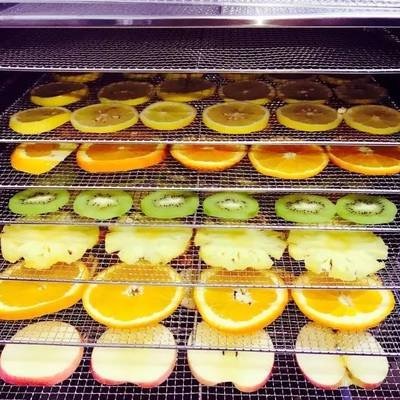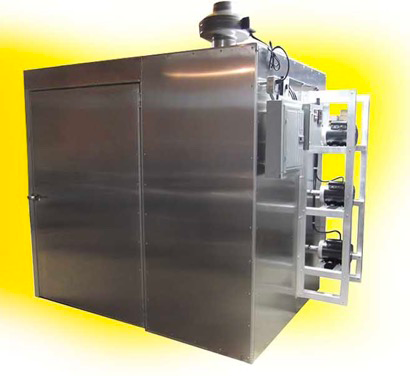
Content Menu
● Understanding Food Drying
● The Importance of Food Drying
● Types of Food Dryers
>> Heat Pump Dryers
>> Vented Dryers
● Comparing Heat Pump and Vented Dryers
● Choosing the Right Dryer for Your Needs
● Additional Considerations
>> Maintenance Requirements
>> Noise Levels
>> Environmental Impact
● Practical Applications
● Conclusion
● FAQ
>> 1. What is the main difference between heat pump dryers and vented dryers?
>> 2. Are heat pump dryers worth the higher cost?
>> 3. Can I install a heat pump dryer anywhere?
>> 4. How long does it take to dry food in a heat pump dryer?
>> 5. Is there any maintenance required for these dryers?
Food drying is an essential process in food preservation, enhancing shelf life, and maintaining nutritional quality. In this article, we will explore the nuances of food drying methods, focusing on the comparison between heat pump dryers and vented dryers. We will delve into their advantages and disadvantages, helping you make an informed decision about which method suits your needs best.

Understanding Food Drying
Food drying is a method that reduces the moisture content in food to inhibit the growth of bacteria, yeasts, and molds. This process not only extends the shelf life of food but also concentrates flavors and nutrients. There are various methods of food drying, including air drying, sun drying, oven drying, and using specialized machines like dehydrators and dryers.
The Importance of Food Drying
- Preservation: Drying food helps prevent spoilage and extends its shelf life significantly.
- Nutritional Retention: Properly dried foods retain most of their nutrients, making them a healthy option for long-term storage.
- Convenience: Dried foods are lightweight and easy to store, making them ideal for camping or emergency supplies.
- Flavor Enhancement: Drying can intensify the flavor of fruits and vegetables, making them more enjoyable.
- Versatility: Dried foods can be used in various recipes, from snacks to main dishes, adding unique textures and flavors.
Types of Food Dryers
When it comes to food drying appliances, two popular options are heat pump dryers and vented dryers. Each has its own set of features that cater to different needs.
Heat Pump Dryers
Heat pump dryers use a closed-loop system to recycle hot air for drying. They operate at lower temperatures compared to vented dryers, making them energy-efficient and gentle on fabrics.
Advantages of Heat Pump Dryers:
- Energy Efficiency: Heat pump dryers consume less energy than vented dryers due to their recycling mechanism. This can lead to significant savings on your electricity bill over time.
- Gentle on Food: The lower temperature settings help preserve the texture and nutritional content of the food better than high-temperature methods. This is particularly important for delicate items like herbs or fruits that can lose flavor when exposed to excessive heat.
- Versatile Installation: Since they do not require external venting, heat pump dryers can be installed in various locations without needing extensive modifications. This flexibility makes them suitable for apartments or homes without existing ductwork.
- Environmentally Friendly: Their energy efficiency contributes to a lower carbon footprint compared to traditional vented models.
Disadvantages of Heat Pump Dryers:
- Longer Drying Times: Due to their lower operating temperatures, heat pump dryers may take longer to dry food compared to vented models. This can be a drawback if you need quick results.
- Higher Initial Cost: The upfront cost for heat pump dryers is generally higher than that of vented dryers. However, this may be offset by long-term energy savings.
Vented Dryers
Vented dryers expel hot air outside through ducts. They are traditional appliances that have been used for many years in both residential and commercial settings.
Advantages of Vented Dryers:
- Faster Drying Times: Vented dryers typically dry food more quickly due to higher temperatures. This speed can be beneficial when preparing large batches of dried foods.
- Lower Initial Cost: These dryers are usually less expensive upfront compared to heat pump models. For those on a tight budget, this can be a significant factor in the decision-making process.
- Larger Capacity: Vented dryers often have a larger capacity for drying food at once. This makes them ideal for commercial applications or households that frequently dry large quantities of produce.
- Simple Operation: Vented dryers generally have straightforward controls and require minimal setup compared to more complex heat pump systems.
Disadvantages of Vented Dryers:
- Energy Consumption: They generally consume more energy over time due to their operation method. This can lead to higher electricity bills, especially with frequent use.
- Installation Requirements: Vented dryers need proper ductwork for installation, which can limit placement options. Homes without existing vents may incur additional costs for installation.

Comparing Heat Pump and Vented Dryers
Here's a comparison table summarizing the key differences between heat pump dryers and vented dryers:
| Feature | Heat Pump Dryer | Vented Dryer |
| Energy Efficiency | High | Moderate |
| Drying Time | Longer | Shorter |
| Initial Cost | Higher | Lower |
| Installation | Flexible (no vent needed) | Requires ductwork |
| Capacity | Smaller | Larger |
| Impact on Food | Gentle (low temperature) | Harsh (high temperature) |
Choosing the Right Dryer for Your Needs
When selecting between a heat pump dryer and a vented dryer for food drying, consider your specific needs:
- If you prioritize energy efficiency and gentle drying processes that preserve nutritional quality, a heat pump dryer may be the best option.
- If you need faster drying times and have a limited budget for initial investment, a vented dryer could be more suitable.
Additional Considerations
In addition to the basic features of each dryer type, there are other factors you might want to consider:
Maintenance Requirements
Regular maintenance is crucial for both types of dryers:
- Heat Pump Dryers require periodic cleaning of filters and checking refrigerant levels to ensure optimal performance.
- Vented Dryers necessitate regular inspection and cleaning of ducts to prevent lint buildup which can pose fire hazards and reduce efficiency.
Noise Levels
Noise can be an important factor depending on where you plan to install your dryer:
- Heat pump dryers tend to operate more quietly than vented models due to their design.
- Vented dryers can produce more noise during operation because they often use powerful fans to expel hot air quickly.
Environmental Impact
With growing concerns about climate change and energy consumption:
- Choosing an energy-efficient model like a heat pump dryer may align better with environmentally conscious practices.
- Vented dryers have a larger carbon footprint due to their higher energy consumption over time.
Practical Applications
Understanding how each type of dryer performs in practical applications can also guide your decision:
1. Home Use: For small families or individuals who occasionally dry fruits or vegetables at home, a heat pump dryer might be ideal due to its gentle approach.
2. Commercial Use: Businesses that require large quantities of dried products might benefit from a vented dryer's larger capacity and faster drying times despite higher operational costs.
3. Specialty Foods: If you're processing delicate items like herbs or spices that require careful handling, heat pump dryers offer better preservation qualities.
Conclusion
In summary, both heat pump dryers and vented dryers have their pros and cons when it comes to food drying. Heat pump dryers offer energy efficiency and gentleness on food but come with higher costs and longer drying times. On the other hand, vented dryers provide faster results at a lower initial cost but may consume more energy in the long run. Your choice should depend on your specific requirements regarding budget, space, desired outcomes in food preservation, maintenance preferences, noise tolerance, and environmental considerations.

FAQ
1. What is the main difference between heat pump dryers and vented dryers?
Heat pump dryers recycle hot air within the unit for energy efficiency, while vented dryers expel moist air outside through ducts.
2. Are heat pump dryers worth the higher cost?
Yes, they can save money on energy bills over time due to their efficiency and are gentler on fabrics.
3. Can I install a heat pump dryer anywhere?
Yes, since they do not require external ventilation, they can be placed in various locations within your home.
4. How long does it take to dry food in a heat pump dryer?
Drying times vary by type of food but generally take longer than in vented models due to lower temperatures.
5. Is there any maintenance required for these dryers?
Yes, both types require maintenance; heat pump dryers need regular cleaning of filters while vented models need duct cleaning to prevent clogs.












